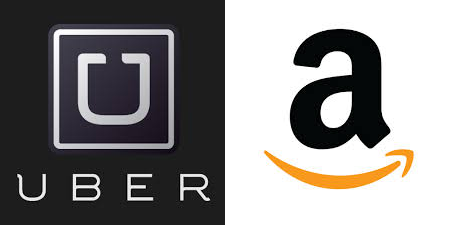
Amazon.com, the online retail giant, intends to dip its toe into the on-demand market to solve the problem of same-day delivery. The Wall Street Journal reported today that Amazon will use local drivers coordinated through an Uber-like logistics system and mobile app to pick-up and drop-off packages for customers. Perhaps the skies will not be full of Amazon drones, after all.
While it pioneered fast delivery of goods in the 1990s and next-day delivery in the 2000s, Amazon has struggled to keep pace with the “I want it now” psychology of the Millennial shopper. The company has lost approximately $1 billion in the last two quarters as it invested in faster local deliveries. Meanwhile, Uber has expanded its driver fleet by the tens of thousands in just the last quarter, connecting drivers to fares and experimenting with local delivery services. Now, the Journal reports, Amazon is prepping an app for on-demand drivers that will connect them to deliveries for the retail mammoth.
Last week, during BIA/Kelsey NOW: Rise of the Local On-Demand Economy, Crowd Companies founder Jeremiah Owyang made a comment that comes into sharp focus in the context of the Amazon delivery service, reportedly called “On My Way.” He suggested that Uber will use its massive part-time workforce to capture a dominant position in the reputation marketplace, requiring anyone who wants to include Uber driver ratings in their own service use Uber’s rating system as a service, effectively cornering the reputation market. With drivers pioneering the on-demand workforce, Uber’s ratings could potentially be key to building consumer trust in the drivers who suddenly seem to be swarming at the front doors of U.S. households.
Reputation and trust are the backbone and sinews of the local on-demand market. After decades of cocooning, ignoring the community and focusing on travel to and from work/shopping destinations, Americans seem to be paying attention to their neighbors, again. Making it easy to answer the door with confidence, knowing a well-regarded local driver is at the door with a delivery, will be table stakes for household delivery providers.
Assembling a supply of, in this case, drivers, is just the first step in the on-demand business. A ratings and review system that lets customers provide feedback on drivers, and vice-versa, allows for the provider of service to cull the crowd of drivers to focus on the highest performers. Moreover, the system can incorporate driver information, such as where they live, to target their deliveries to neighbors, allowing a local to become the face of the delivery service — the same drivers may soon be delivering every package from Amazon and other services. Several analysts speaking to USA Today pointed to the trust problem explicitly, as well as the possibility that having neighbors involved in the service could be perceived as a privacy issue by some customers.
The BIA/Kelsey Quick Take: The use of local drivers will present challenges for branded services, but it also firmly establishes the brand as a participant in the community. Smart marketers will seek to connect people that reinforce the neighborhood identity while ensuring that drivers know as little as possible about the content of packages. That said, it is also pleasant to have someone deliver food and know that Tuesday is “Thai Food Night” at a customer’s home. That kind of local knowledge binds people together and creates familiarity. The strategy of using drivers to fulfill local delivery is a logical step for Amazon, as it will be for many local and national businesses that want to compete against upstart on-demand services in their market. They will add drivers, hiring them via on-demand markets or partnering with, among others, Uber or, perhaps, Amazon. The report that Amazon is contemplating its own logistics infrastructure strongly suggests that the consolidation phase of the on-demand transportation market is already looming immediately ahead — these kinds of massive investments force companies to consider acquisitions. Dare we speculate? It may be that Uber never reaches IPO, but is acquired by Amazon or another commerce player seeking to grab hold of the local on-demand services market.
This Post Has One Comment
Leave a Reply
You must be logged in to post a comment.

These days, a billion dollar business can potentially be glued together with different on-demand services. In the above example:
1. On Demand Cars/Drivers (Ex: Uber)
2. Online Shopping Cart & Transaction gateways (Ex: Shopify)
3. In-Store Product Inventory/Price (Ex: Retailigence)
4. Call Center (Ex: LiveOps)
5. Inbound Marketing (Ex: HubSpot)
Ta-da! ; )